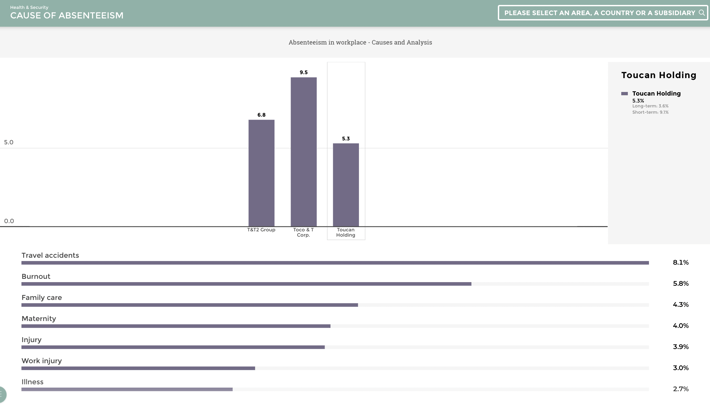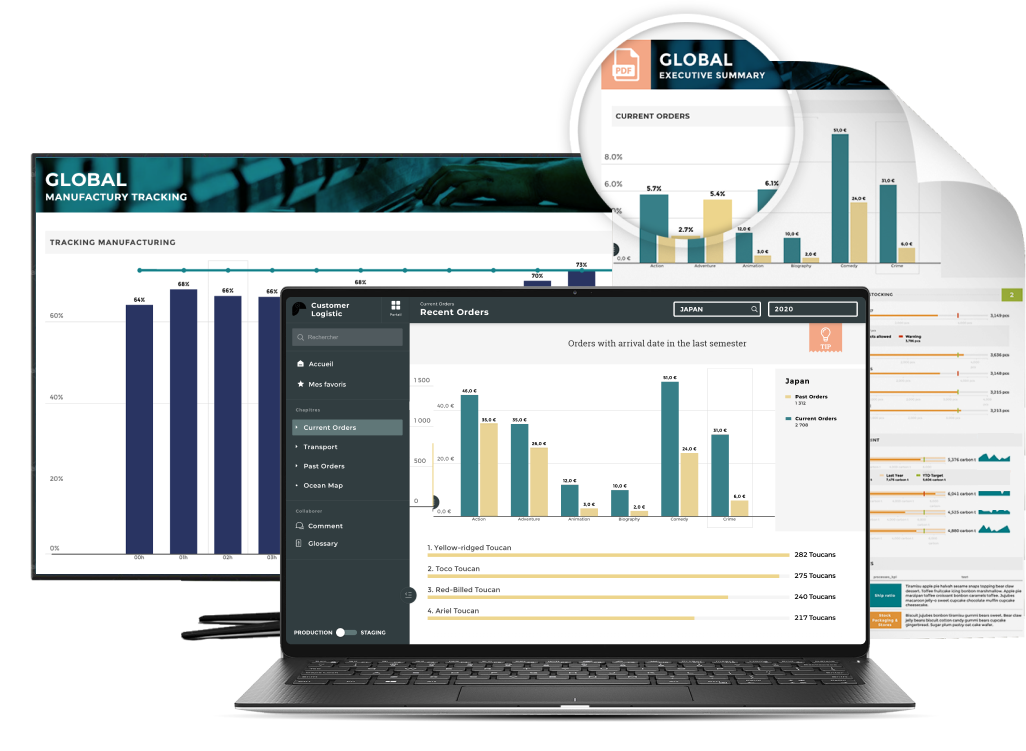Employee experience refers to how employees observe, interpret, and internalize all of their interactions with an organization. As part of this process, all organizational encounters, or touchpoints, throughout the employee life cycle are incorporated, including:
- The interview process
- Onboarding after a new hire
- The training process
- Internal promotions
- Statisfaction interviews
- Exit interviews
.png?width=710&height=414&name=Blog%20graphics%20Joy%20(2).png)
There are traditionally three categories of employee experience factors:
- Workspace: The importance of a safe and practical working environment, as well as the convenience of an office location, cannot be overstated. Physical workplace factors include perks such as lunch stipends and career counseling.
- Culture: It is important for the organizational structure to provide employees with opportunities for future growth. In addition to fair compensation and adequate retirement benefits, cultural factors contribute to a positive employee experience.
- Technology: Resources should be available to employees so that they can do their jobs effectively. High-performance computers and fast networks, for example, can enhance employee engagement and satisfaction. Conversely, outdated systems can negatively affect employee satisfaction.
Employees' experiences can be enhanced by a number of other factors in the era of distributed work, including:
- Flexibility and good work-life balance
- Transparent and open communication
- Organizational trust
- Meaningful input
- Healthy co-worker and manager relationships
- Voice, empowerment, and accountability (VEA)
Employee engagement can also be enhanced through recognition and feedback. 83 percent of employees respond positively to feedback, whether it be positive or negative, according to survey data.
8 Metrics to measure employee experience
It may be more effective to develop employee surveys strategically based on these indicators, than to ask your team questions on the spot, to gain valuable insight into specific factors contributing to employee satisfaction. Not only will the results demonstrate where your EX excels, but they will also enable you to identify problem areas that require attention.
To keep your employee experience thriving, we have compiled 8 metrics that you can track.
1. Satisfaction levels
Using satisfaction levels, we can gather qualitative information about how our team members feel about their work environment. More specifically, employee satisfaction measures your team's satisfaction with their role in the organization, their compensation, and the overall workplace environment.
If you do not ask the right questions, it will be difficult to quantify employee satisfaction. Some questions you may wish to ask are as follows:
- Do you feel you are making a difference in the organization?
- Are you satisfied with the resources at your disposal?
- On a scale of 0 to 10, how satisfied are you with your compensation and benefits package?
- Are you comfortable in your work environment?
After you collect your team's responses, you'll be able to act on the right pain points. It will be quick for you to identify low-hanging fruit that will have a significant impact on your employee experience.
A survey of employee satisfaction levels and one-on-one conversations are excellent means of gaining a deeper understanding of employee satisfaction levels within an organization or department.
2. Employee Net Promoter Score (eNPS)
An employee Net Promoter Score is a critical metric for evaluating employee satisfaction, and is typically included in annual employee surveys.
In eNPS, employees are asked to rate their likelihood of recommending their current workplace as a good place to work on a scale of 0 (unlikely) to 10 (highly likely). ”
Employees can be classified into one of three categories based on their responses:
- Promoters: A score of 9 or 10
- Neutrals: A score of 7 or 8
- Detractors: A score of 0 to 6

An employee net satisfaction score of 30 or higher may indicate relatively high levels of employee satisfaction. Neutral employees do not affect this score, since they are generally indifferent to the organization as an employer.
The neutrals are not included in the eNPS formula, but they should not be ignored since they are likely to make up the majority of your workforce. Your objective should be to identify your neutrals and implement practical improvements based on their survey feedback in order to convert them into promoters.
3. Internal referrals
The number of referrals your team members send HR is often overlooked when measuring employee experience. Despite its close connection to employee Net Promoter Score, this KPI demonstrates ambassadorship in practice.
When was the last time you referred someone you know for a job at your organization - and when was the last time you didn't. In most cases, employees refer others only when they are satisfied with their employee experience. People wouldn't want to share the burden of their work environment if they didn't enjoy it. Alternatively, if you feel engaged day-in and day-out, you will be happy to see others experiencing the same.
In addition to giving you a glimpse into how your employee experience stands, referrals and a good referral program can also help shape your employee experience. According to LinkedIn data, people who refer others, especially those who refer others successfully, stay at their organizations longer.
4. Employee productivity
An Oxford University study found that employees who are happy at work are, on average, 13% more productive. Therefore, measuring productivity levels will allow you to gain a good understanding of how your employees perceive your EX.
Identifying actionable goals on a quarterly or annual basis and tracking your team's progress is a great way to measure your team's productivity. In a department where goals are consistently achieved or even exceeded, it is a sign of positive and motivating working conditions. Once you have gauged your team's productivity levels, you will be able to improve them over time in order to help them do their best work at all times.
5. Retention rates
Employee retention is an important KPI that affects your employee experience. A person stays where he or she feels happy, motivated, and inspired on a daily basis.

For example, suppose 200 staff members worked for the organization at the start of January, and this number increased to 250 by the end of December. In this case, 50 employees started a new job at the company, and your retention rate is 125%.
An employee retention rate of over 100% indicates a high level of employee satisfaction. Retention rates improving over time indicates effective steps have been taken to enhance the employee experience.
It is a good idea to ask employees what they need at regular intervals in order to make them feel heard. It is important to open lines of communication among employees in order to foster healthy relationships, increase employee retention, and ultimately create a better work environment.
6. Employee absenteeism
In order to maximize profitability and employee engagement, absenteeism rates must be kept as low as possible. Over the course of a year, absenteeism can have a significant impact on productivity and cost your organization thousands of dollars. Absences for non-urgent matters affect the workload of other employees, which has a negative effect on the performance of those employees.

An absenteeism rate below zero (or as close to zero as possible) is generally indicative of a positive employee experience. A positive attitude toward one's work environment reduces the likelihood of the employee using minor excuses to avoid the office.

7. Recognition frequency
An organization's culture is often defined by its relationships and human interactions. In order to measure employee experience, you will need to look at how these relationships are handled at work.
Managers and leaders can gain valuable insights from the recognition KPI, particularly when it is given among peers. By recognizing each other, whether for their hard work or simply for being awesome, colleagues contribute to a better employee experience.
In order to identify trends within your organization, we recommend tracking your own recognition frequency over time. It is only after you have a clear understanding of what the status quo is that you can work on improving or maintaining your recognition levels.
8. Wellness
In the event that employees experience physical or mental health issues, especially with respect to work-related issues, this can have a detrimental impact on their employee experience. A number of factors can adversely affect employee wellness, including:
- Unrealistic workloads and expectations
- Insufficient health and safety policies
- Poor management and communication practices
- Inflexible work hours
- A workplace culture of harassment or bullying
- An environment that does not value diversity and inclusion
It can be challenging to collect quantitative data about the health of employees. You can, however, determine how your team is feeling and what factors are negatively affecting their well-being by sending regular employee wellness surveys. A key factor to gauge in these surveys is the mental health and well-being of your employees.
The importance of a positive employee experience
Businesses tend to be more successful when employees feel positive about going to work. The following factors contribute to this increase in business performance:
- Employee retention: Employee retention rates are increased when the employee experience is maximized because happier, more engaged employees are less likely to leave the organization for a new opportunity. When employees remain with your organization for a long period of time, they become experts and ambassadors, contributing to the long-term growth of your company.
It is important to remember that high turnover can result in high costs as well. It has been estimated that replacing an existing employee can cost two times their salary. - Improved engagement: There are many benefits associated with high employee engagement. Engaged employees are more likely to be productive and to go the extra mile for their organization. In addition to driving up their own performance, these employees often encourage the rest of the team to follow their lead.
Clearly, engagement is a top priority and should be prioritized. It can, however, be difficult to promote employee engagement when your organization does not focus on the broader employee experience. It is impossible for one to exist without the other. - Better recruitment: Your employee recruitment strategy should focus on enhancing employee experience. There is a high demand for top talent these days. Talented candidates will be more likely to apply for vacant positions if they are aware that your organization is committed to creating a positive company culture and providing growth opportunities. In addition, if you are able to highlight your employee experience throughout the interview process, you will have no problem winning them over.
Your interview process can be enhanced by including other employees and brand ambassadors. In order for candidates to make an informed decision, they will need to see others living your organization’s employee experience. - Customer experience: Energized employees who experience positive work environments are more likely to carry their positivity to the outside world and engage with customers, thereby providing them with high-value solutions. By doing so, you will be able to improve your customer advocacy loop and keep your clients engaged with your products and services.
Work has changed dramatically over the past two years. With an increase in remote work and hybrid office structure, understanding employee experience is more important now than ever before. An engaged and happy team is more likely to perform better as a whole.
Toucan’s analytics solution provides a 0-code, effective method to start measuring employee engagement and gaining insights into your team’s experience in no time. Before you know it, your employee experience will be on the rise and there will be no looking back.





